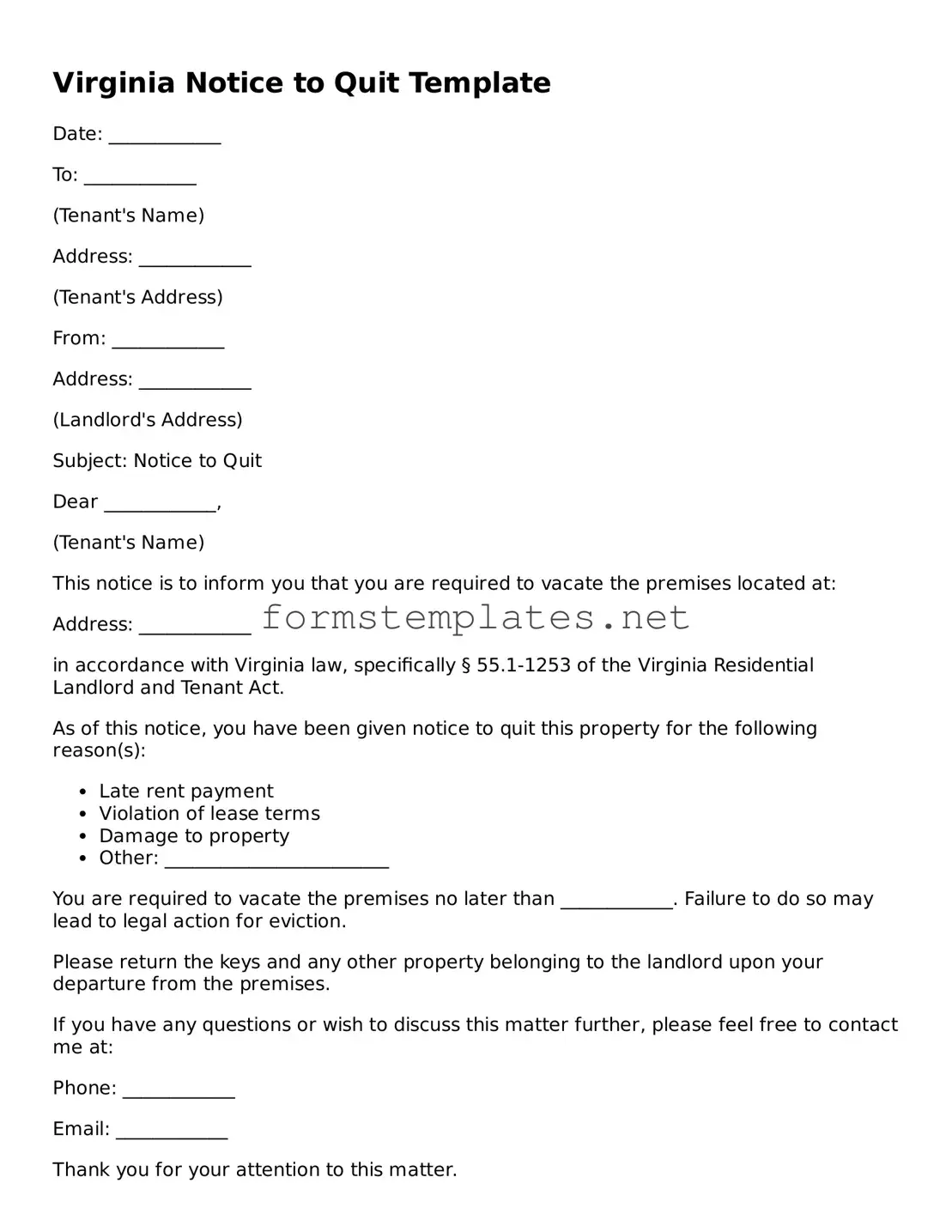The Virginia Notice to Quit form is a legal document used by landlords to inform tenants that they must vacate the rental property. This notice is typically the first step in the eviction process. It outlines the reasons for the eviction and provides the tenant with a specified timeframe to leave the premises.
When should a landlord use a Notice to Quit?
A landlord should use a Notice to Quit when they wish to terminate a lease agreement. Common reasons include:
-
Non-payment of rent
-
Violation of lease terms
-
End of lease period
-
Illegal activities on the property
It's important to follow the legal guidelines for issuing this notice to ensure that the eviction process is valid.
How much notice must be given to tenants?
The amount of notice required varies depending on the reason for the eviction. Generally, landlords must provide:
-
5 days for non-payment of rent.
-
30 days for lease violations.
-
30 days for ending a month-to-month lease.
Always check local laws, as they may have specific requirements.
Can a tenant contest a Notice to Quit?
Yes, tenants have the right to contest a Notice to Quit. They can respond to the notice, addressing the reasons given by the landlord. If the situation escalates to court, the tenant can present their case, and a judge will make the final decision.
What happens if a tenant does not leave by the deadline?
If a tenant does not vacate the property by the deadline specified in the Notice to Quit, the landlord may proceed with filing an eviction lawsuit. This legal action will require a court hearing, where both parties can present their arguments.
Is a Notice to Quit the same as an eviction notice?
No, a Notice to Quit is not the same as an eviction notice. The Notice to Quit is a preliminary step that informs tenants they need to leave. An eviction notice typically follows if the tenant fails to comply with the Notice to Quit.
Can a Notice to Quit be served in person?
Yes, a Notice to Quit can be served in person, but it can also be sent via certified mail. In some cases, landlords may post the notice on the tenant's door if they are unable to reach them directly. Proper documentation of how the notice was served is essential.
What should be included in a Notice to Quit?
A proper Notice to Quit should include the following details:
-
The date of the notice
-
The tenant's name and address
-
The reason for the eviction
-
The date by which the tenant must vacate
-
Signature of the landlord or their representative
Including this information helps ensure clarity and legality.
You can find a Virginia Notice to Quit form online through various legal websites, or you may consult with a local attorney for assistance. Many local courts also provide templates or resources for landlords and tenants.
